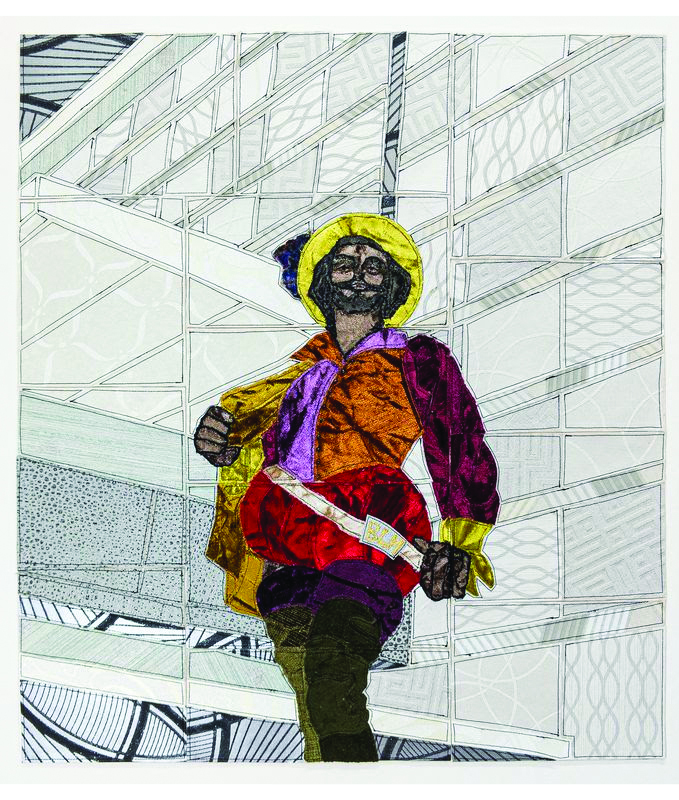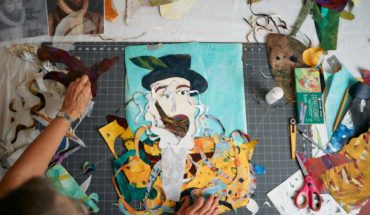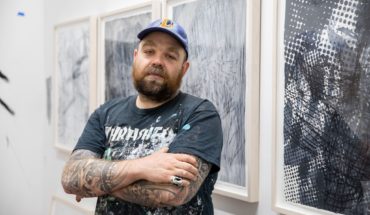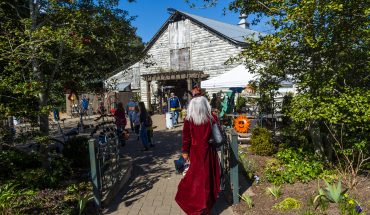Known as both a performer and a visual artist, Caitlin Cary creates scenes of Raleigh and Durham with needle and fabric.
by Colony Little / Photography by S.P. Murray
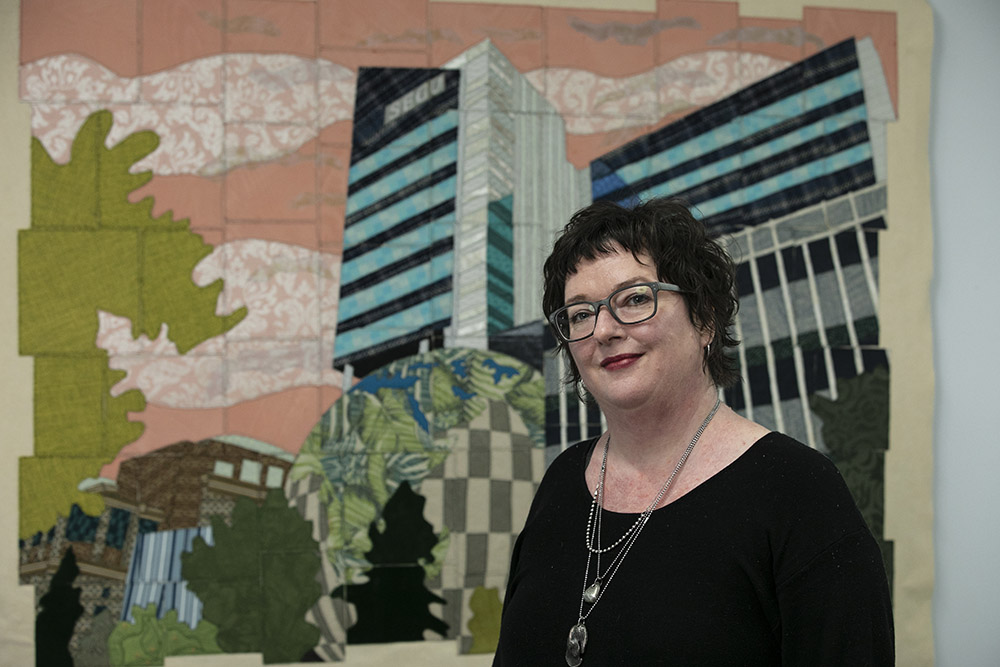
For Caitlin Cary, creative career pivots have defined the depth and breadth of her artistic practice. From music and writing to visual arts, she has nimbly embraced change. Cary comes from a musical family, where she began playing the violin at four years old and continued to study the instrument well into her teens. She shelved her bow in favor of more adolescent pursuits (“boys and horses,” she quips), but her latent musical skills would resurface years later.
After moving to Raleigh in 1993 to pursue a master’s degree in Creative Writing at North Carolina State University, Cary embarked on a successful, whirlwind career as a violinist, vocalist and songwriter for the alt-country band Whiskeytown, then as a solo artist.
In recent years, Cary has ventured down a new creative path that’s kept her rooted in Raleigh, where her visual arts career began to flourish.
As a textile artist, Cary reconstructs architectural landscapes and landmarks by stitching together pieces of upholstery that are then sewn to paper or stiffened canvas. She coined a term for this unique collage process: “needle print.” For her work, she sews together shapes to mimic familiar landmarks or scenes, layering the fabric elements over screen-printed paper.
The fabrics that Cary incorporates play an important role in accentuating the unique design details of her subjects. Lavish brocades, rich florals, classic tweeds and woven chenilles add depth and dimension to her collages. She has a closet full of upholstery fabric swatches and interior design sample books that she incorporates into her work.
“The inspiration came in part from a trip to the Scrap Exchange in Durham,” says Cary. “It’s a pretty magical place for castoffs from all industries. What I found were sample books from upholstery and this incredible variety of fabric — it was a whole revelation to me that all this amazing texture and variety existed.”
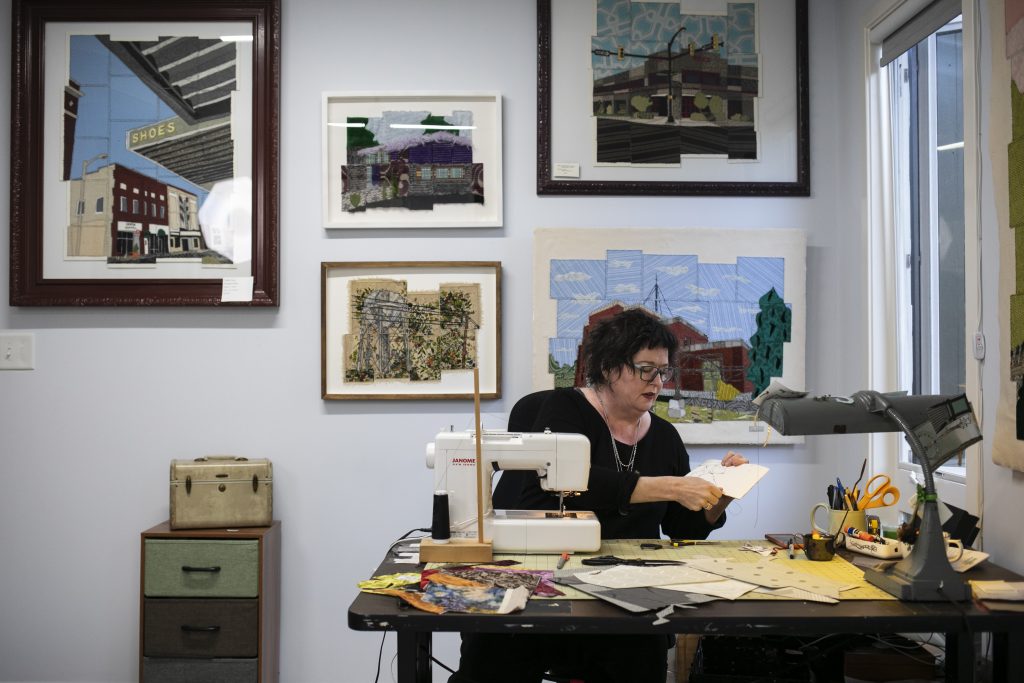
Many of her pieces feature historical and contemporary landmarks around Raleigh and the Triangle, including the legendary Krispy Kreme Donuts on Person Street and the Neuse River Greenway Trail. Other works, like Cary’s rendering of the Mid-century modern Durham Hotel, stay true to the building’s banking roots by incorporating imagery from the original Home Savings signage.
This artistic process has become a way for Cary to memorialize the places that make the Triangle unique. “It felt important to make notes about what this place was and why I loved it,” she explains, “especially watching it change so rapidly, it felt like a documentary process.”
But even with a featureless or rundown building, Cary’s use of textiles lends the subject an endearing quality. “When buildings are rendered in fabric they become more adorable,” she says. “It helps me to sentimentalize the places I feel sentimental about.”
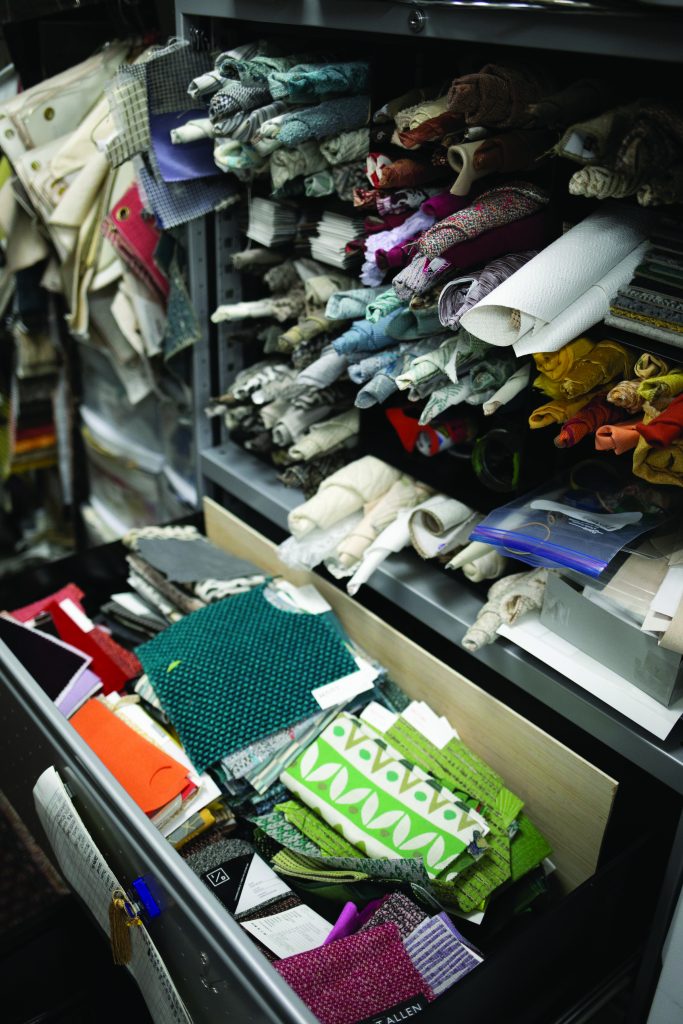
In 2020, Cary embarked on yet another creative pivot, this time within her own textile medium. In her latest series, called Piers, she experiments with perspective by narrowing the focus of her architectural subjects to their structural elements. By shifting the viewer’s gaze toward these undergirdings, the work assumes a more abstracted quality.
A group of her new works are on view in the Wellborn Gallery at the Yadkin Cultural Center, and in 2021 Cary’s work will be exhibited at the Ravenscroft School, the Cary Arts Center in the summer and the Sertoma Arts Center in the fall.
Throughout Cary’s artistic career, the theme of storytelling remains constant, whether it’s through music or collage. “The line that connects all creative endeavors and the kind of storytelling that you do to write a song feels kindred,” she says. “I feel like I tell a little story about the places that inspire me and I write a little song in my head.”
